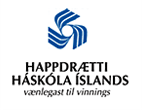Question
What was a fóstbræðralag ('foster-brotherhood') and why did people make them?
Asked By
Sigurbergur Vigfússon
Answer
Fostering appears to have been fairly common in early Icelandic society and was intended to create social bonds equivalent to kinship ties between people who were otherwise unrelated. The commonest form was, as nowadays, the bringing up of children in the home of someone who offered this service; in such cases the fosterer was viewed as showing deference to the family of the child fostered. But grown men of equal status could also enter voluntarily into similar relationships with each other and become foster-brothers or blood-brothers. Several sagas speak of men swearing oaths of foster-brotherhood. From the accounts it appears that this was a pre-Christian custom and no longer practised at the time when the sagas themselves were written. An account in Gísla saga Súrssonar (The Saga of Gísli) shows how people of the 13th century conceived of the way this kind of ceremony was conducted in heathen times:[They] now go out onto the spit of land at Eyrarhválsoddi and cut up a strip of turf from the ground, leaving the two ends fixed in the earth, and prop it up with an ornamented spear long enough for a man to just reach up to the nails that fastened the blade. It was intended that the four of them should go under it, Thorgrímr, Gísli, Thorkell and Vésteinn. And now they open veins and let their blood run together with soil taken up from under the band of turf, and they mix it all together, the soil and the blood. And then they all fell to their knees and swear an oath in the name of all the gods that each shall avenge the other as he would a brother.A similar description occurs in Fóstbræðra saga (The Saga of the Foster-Brothers), also presumably put together some time in the 13th century:
So they made a pact with solemn oaths that whichever of them lived the longer would avenge the other. For though people were called Christian at the time, the Christianity was still young and left much to be desired, and many sparks of heathendom lingered on and were put to wicked use. They followed the custom of illustrious men who set up a rule between themselves of the one who lived longer avenging the other, that they should walk under three strips of earth and this was their pledge. This practice of theirs took the form of cutting three long turfs from the ground; their ends should all be fixed in the group and the loops pulled upwards so that men could walk underneath. This practice Thormóðr and Thorgeirr performed in confirmation of their vow.These accounts, as can be seen, do not concur in all respects, since there is no mention in Fóstbræðra saga of the mixing of blood. However, both sagas mention the practice of cutting turfs and walking under them. At the heart of the foster-brotherhood appears to lie the vow that each should avenge the other, and this is often the only aspect that sagas mention. In 'The Tale of Ormr Stórólfsson' in Flateyjarbók the oaths are described thus:
In the end the swore a pact of foster-brotherhood in accordance with ancient custom that the one of them that lived longer should avenge the other if he suffered death by violence.We may imagine that in Christian times these kinds of oaths took the place of the mingling of blood. In the laws there are several references to 'oath brothers'. According to the Gulathingslaw, a man had the right to seek compensation from someone who killed his 'oath brother'. In early medieval European sources there are occasional references to foster-brotherhoods that appear to have been similar to those described in the later Icelandic. However, these kinds of alliances also show signs of being influenced by the Roman concept of amicitia, that is, political friendship or support. Translated by Nicholas Jones. For more information on the institution of foster-brotherhoods in the sagas and Viking culture, see:
- Valtýr Guðmundsson, Fóstbræðralag, in Þrjár ritgjörðir sendar Páli Melsteð (1892), 29-55.
- Reinhard Schneider, Brüdergemeine und Schwurfreundschaft (1964).
- Olav Bø, Fostbrorskap, Kulturhistorisk leksikon for nordisk middelalder 4. Epistolarium-Frälsebonde (2nd ed. 1981), 540-1.
Um þessa spurningu
Dagsetning
Published25.11.2005
Category:
Citation
Sverrir Jakobsson. „What was a fóstbræðralag ('foster-brotherhood') and why did people make them?“. The Icelandic Web of Science 25.11.2005. http://why.is/svar.php?id=5432. (Skoðað 1.4.2025).
Author
Sverrir Jakobssonprófessor í miðaldasögu við HÍ



